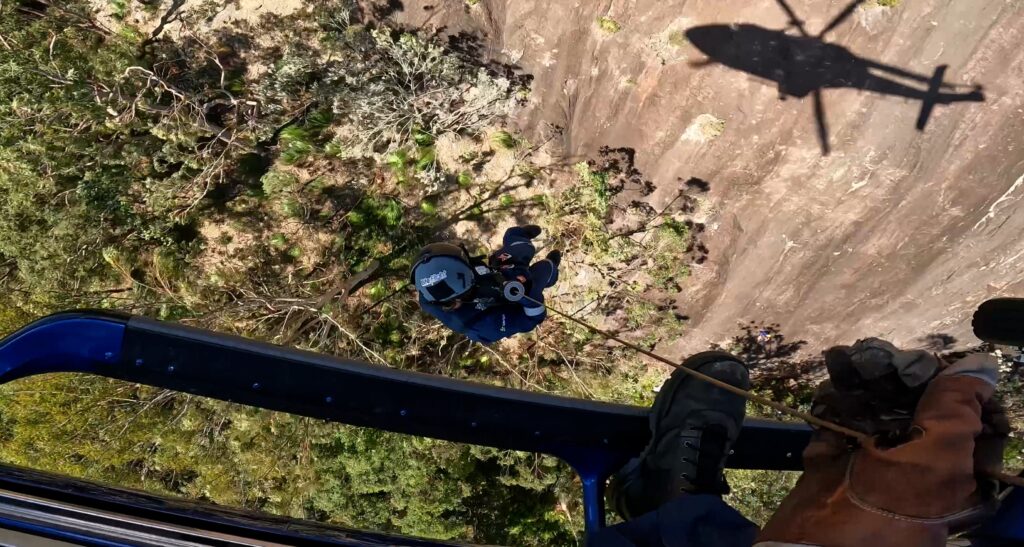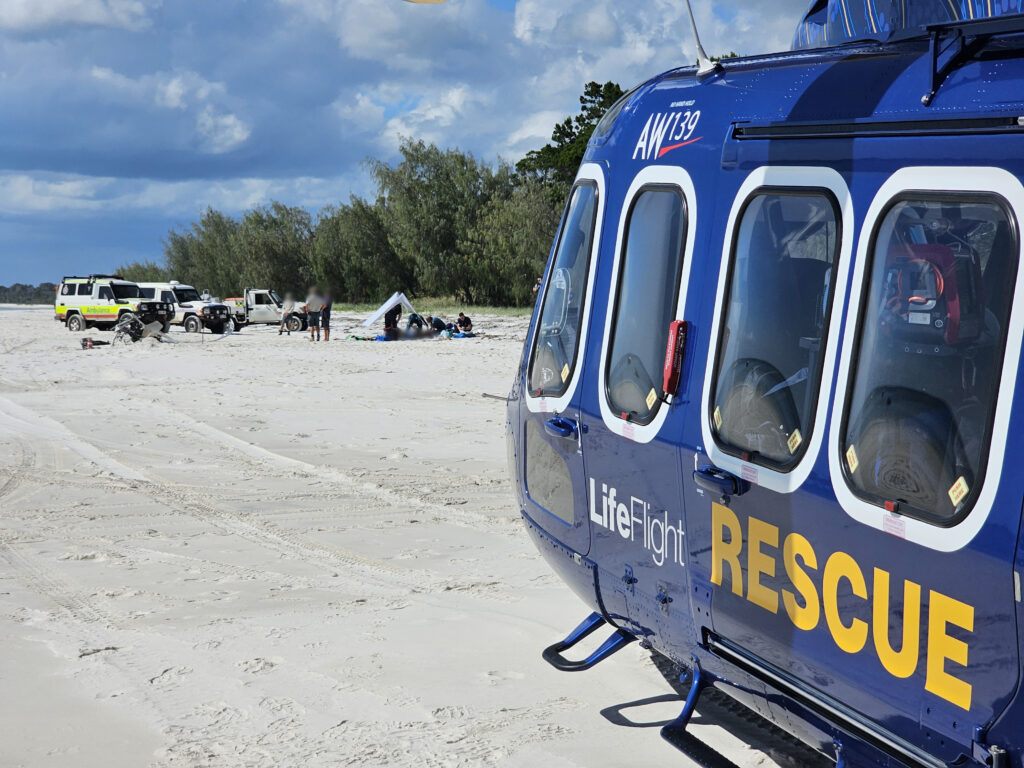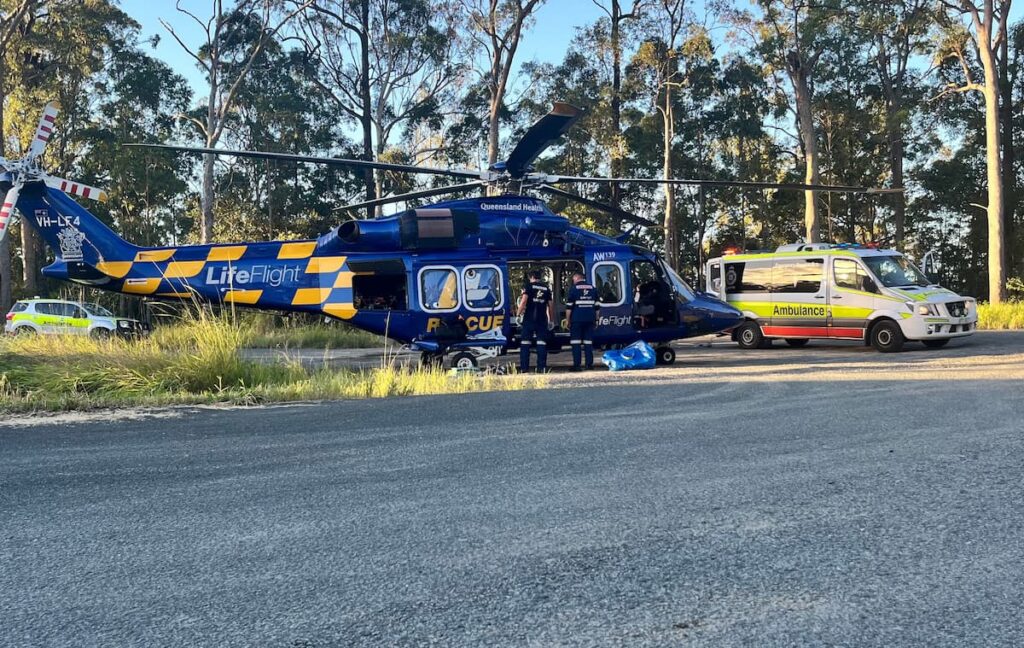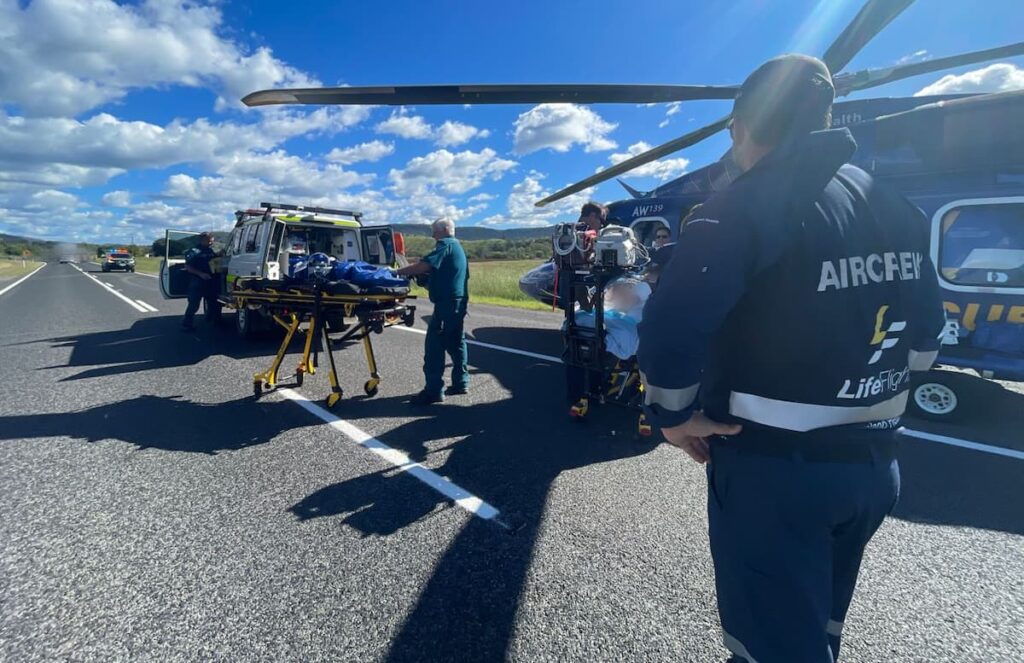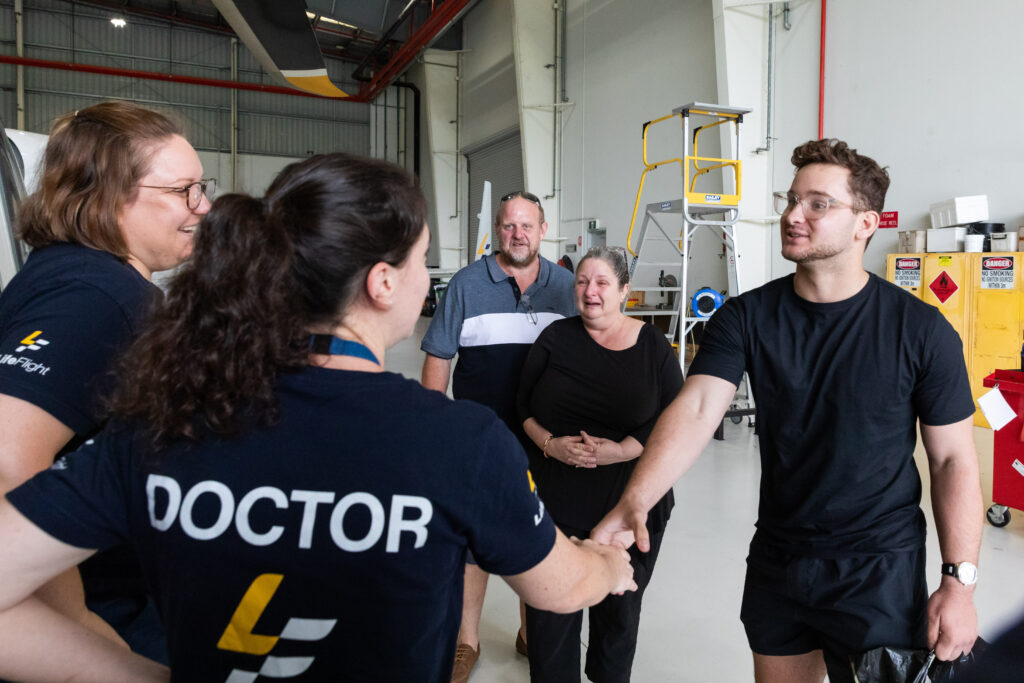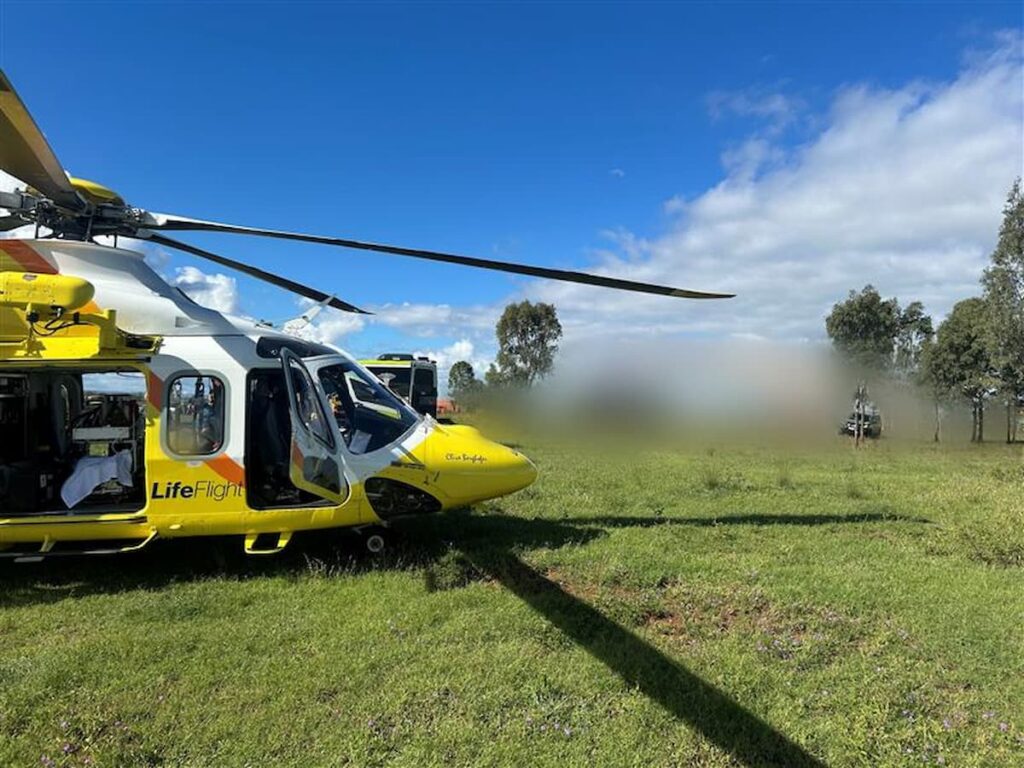An Intensive Care doctor has made his childhood dreams come true, by training with LifeFlight to join the aeromedical team on Far North Queensland’s rescue chopper.
Dr Kris Salaveria was inspired to work on board helicopters ever since one landed for a visit at his school.
“From then on, I always had it in my mind ‘ooh I want to be like that’ but I never really had a clear pathway to that,” he said.
Many years and a medical degree later, he was working with LifeFlight retrieval registrars through his role in the Intensive Care Unit at Gold Coast University Hospital.
“Eventually at the end of my Intensive Care training where I gained all the skills to do LifeFlight training and medicine I realised the opportunity was there and I applied and got in. It’s a bit of a dream I guess, turned into reality now,” he said.
Dr Salaveria is among a group of 25 doctors, who will be starting work on aeromedical helicopters and jets across Queensland, after completing an intensive training week with instructors from the LifeFlight Training Academy, which prepares them for the many challenges of retrieval medicine.
“The simulations and the training that I’ve done this week have been so good and I think world class. We have people from Singapore and Sweden come here and train with us and that speaks volumes to the quality of training that we’ve had,” he said.
One of the most important and challenging aspects of the training, is learning how to be winched to and from a chopper.
“Some of our patients are in remote areas, that could be a mountainside, that could be in the bush that’s not accessible. We need to be able to insert our paramedic and doctor into that environment so they can care for the patient and ultimately recover them. Whilst it’s not something we do every day there is a chance that they could go out next week and be tasked to a job on the side of a mountain or otherwise that entails winching them in to save that patient,” said LifeFlight Chief Aircrew Officer Nathan Minett.
The exercise teaches double lift techniques, when two crew members are winched. The doctor also learn how to bring a stretcher patient safely into the aircraft.
“So, they’re practicing the two skill sets in the aviation environment that we really need them to embed and make sure that they know really well,” said Nathan Minett.
The retrieval registrars were also strapped into a metal helicopter simulator, which is then dunked underwater in different emergency scenarios, as part of Helicopter Underwater Escape Training (HUET).
It is a case of always hoping for the best, but preparing for the worst.
“It is highly unlikely that they’re ever going to use it, but it’s a safety issue and this can be developed for if the aircraft had an issue and had to go to the ground and was forced landing to the ground with smoke and fire being maybe the issue, so with the HUET training we do a lot of it is to do with getting seatbelts on properly, locating the exit knowing where it is without actually looking for it. So, the whole package is designed for safety in the aircraft in regard to what may happen whether it be in the water or into the ground,” LifeFlight HUET Manager Mick Dowling said.
Back on dry land, at the Queensland Combined Emergency Services Academy at Whyte Island, the doctors were put through their paces in a series of simulated emergency scenes.
They were faced with some of the confronting realities of pre-hospital care, in realistic scenarios including a worker injured in a confined space and in need of evacuation from a ship, a near-drowning incident in a backyard pool and a car crash with fatalities and survivors.
Dr Salaveria and three other recruits who completed training this week, will work on board the Cairns-based AW139 Queensland Government Air (QGAir) helicopter.
QGAir is part of the Aviation Capability Group within the Queensland Police Service.
It has a fleet of five AW139 helicopters operating from bases in Cairns, Townsville and Brisbane, performing life-saving tasks and responding to emergencies throughout Queensland.
Aviation Capability Group A/Chief Superintendent, Marcus Hill, said QGAir was delighted to welcome the new doctors.
“We are proud to team with LifeFlight to enable highly-trained critical care doctors to be transported across the State’s aeromedical network and respond to emergencies,” said A/Chief Superintendent Hill.
The majority of the RACQ LifeFlight Rescue Critical Care Doctors’ work is performed on behalf of Queensland Health, tasked by Retrieval Services Queensland, within Queensland Ambulance Service.





